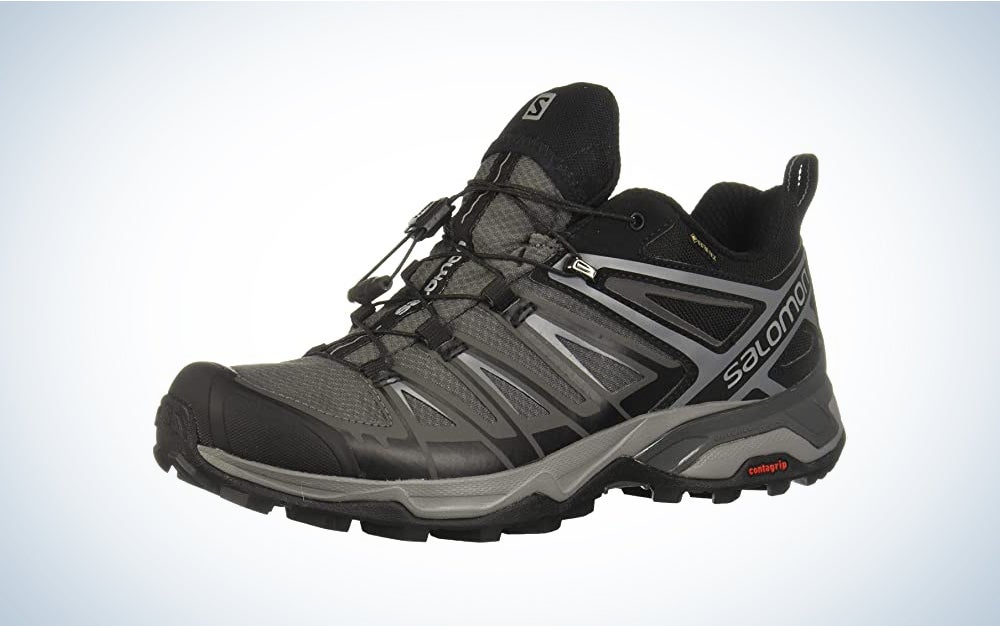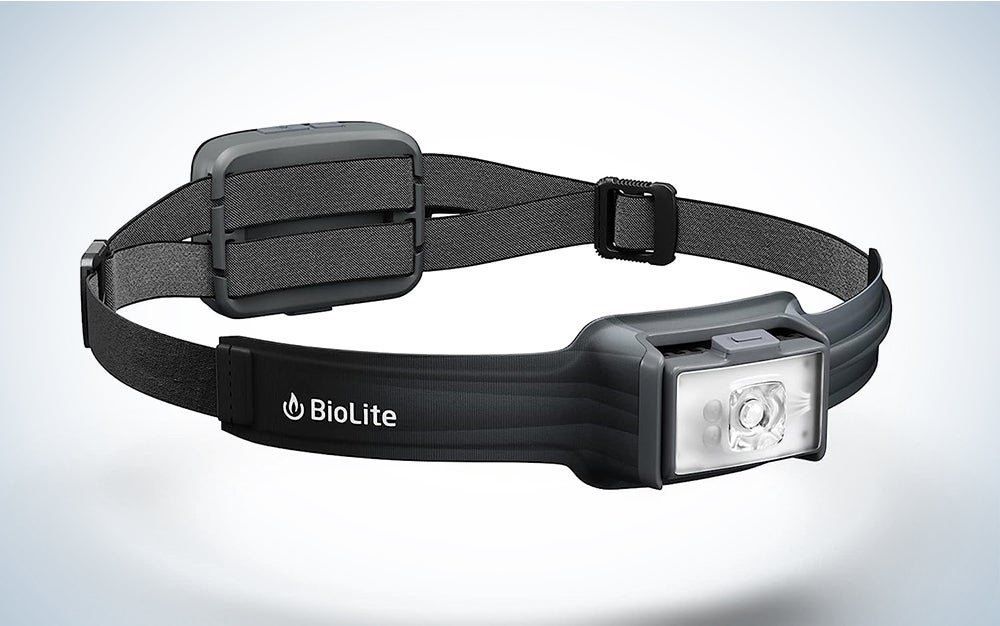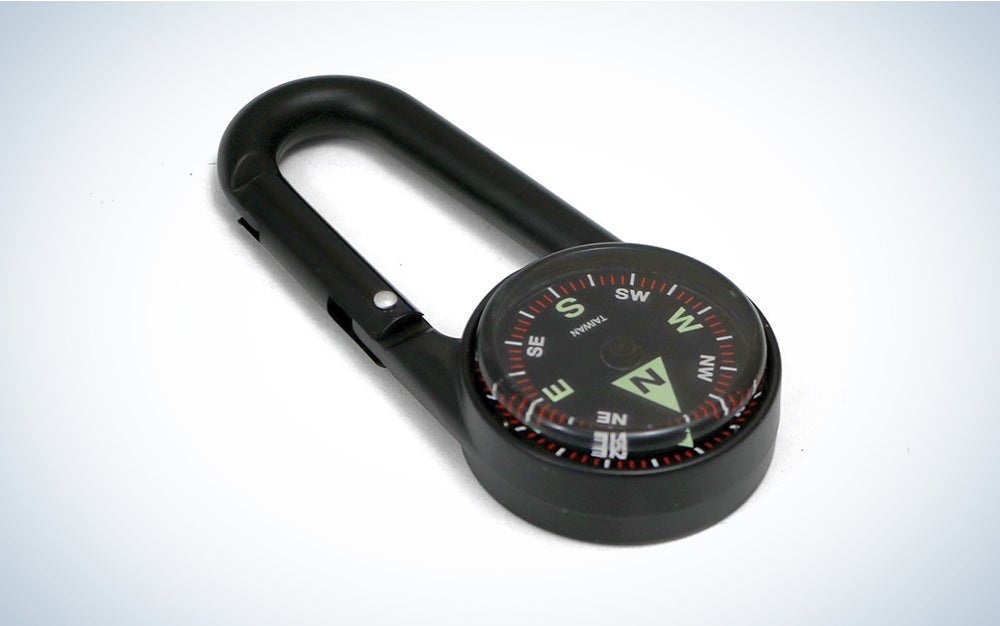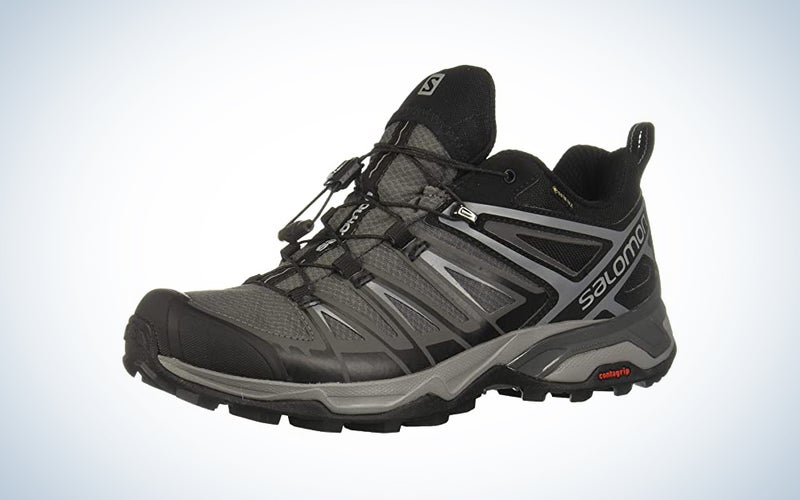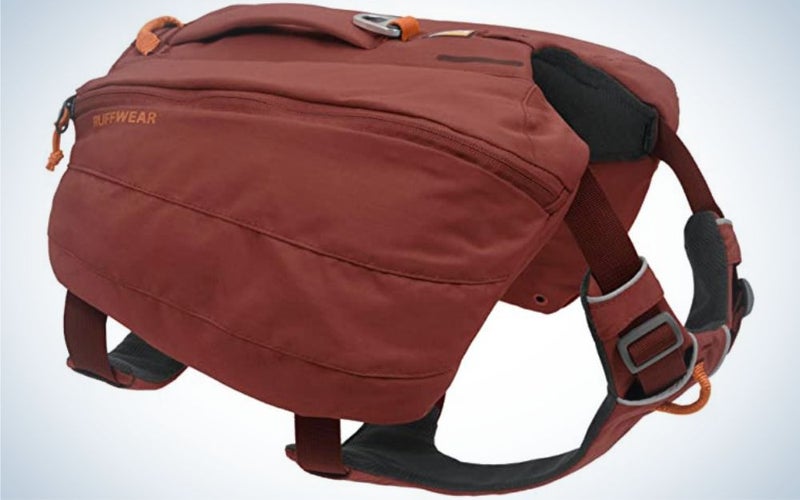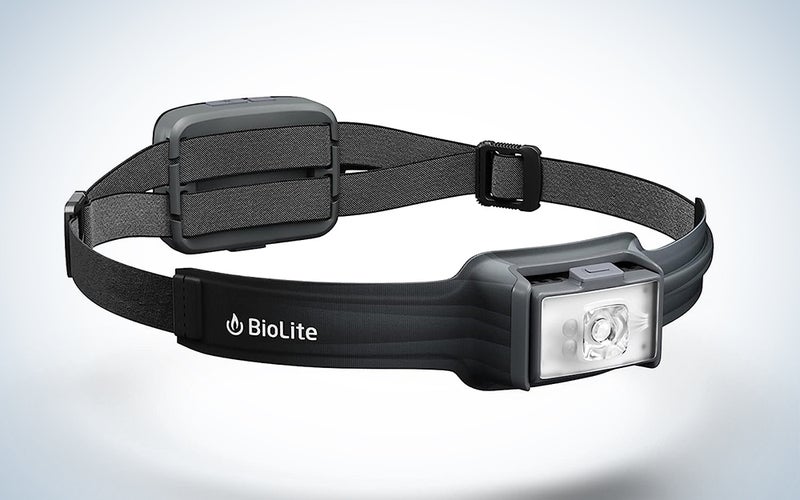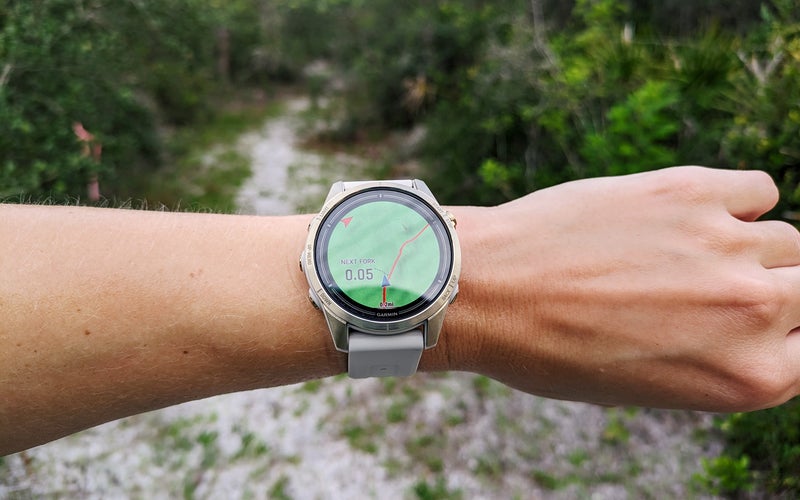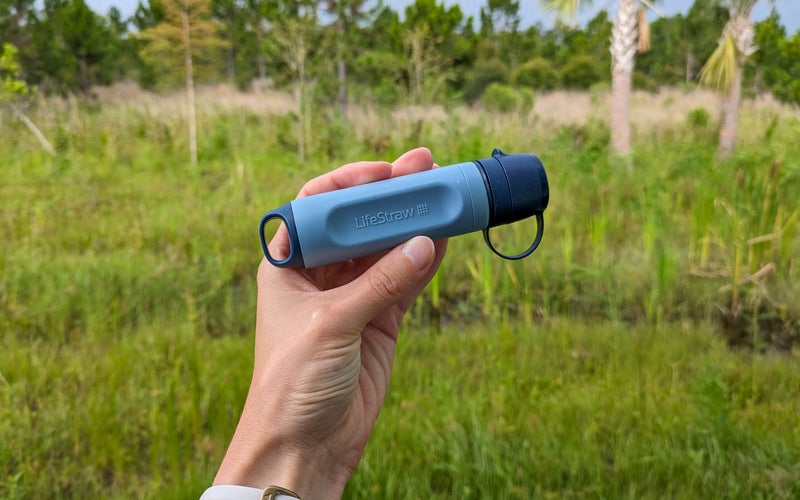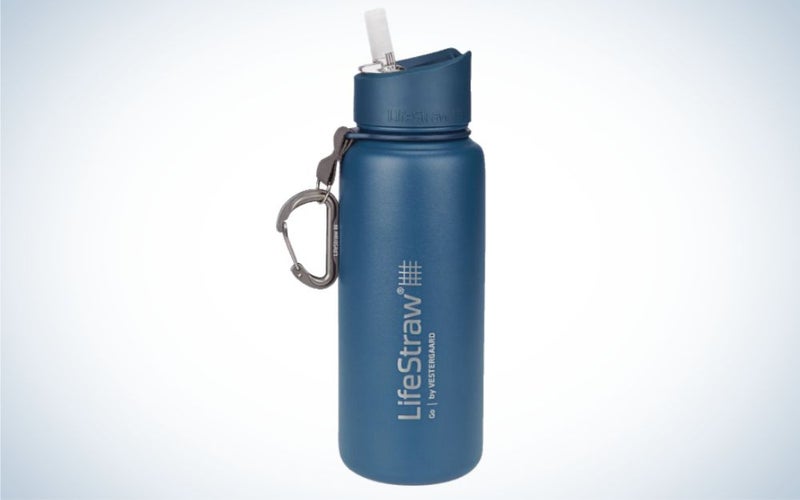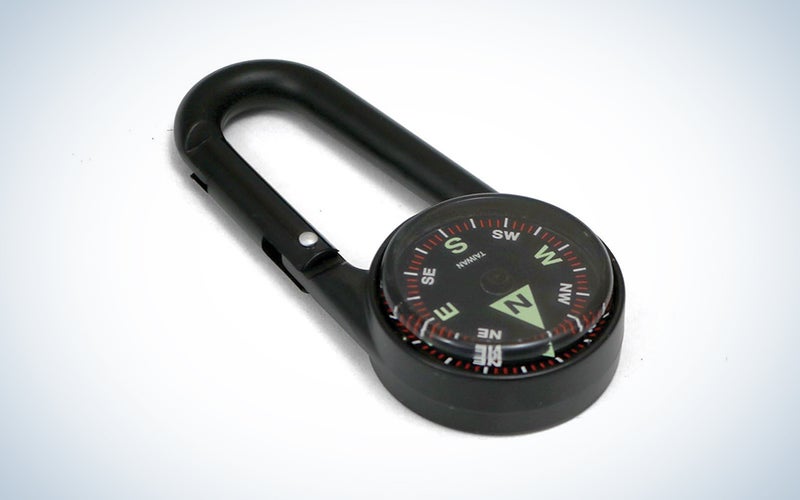We may earn revenue from the products available on this page and participate in affiliate programs. Learn more ›
Hiking is a great way to elevate your mood (and body) and change your outlook(s), letting you change gears from the daily grind and get lots of endorphins. Nature makes you happy, and exercise makes you happy, so why not kill two birds with one stone? You can find hiking trails all around you, even if you’re a city slicker. A great hike starts with being prepared. That means getting a good sturdy pair of hiking shoes, snagging your favorite pack to carry what you need, and bringing a water bottle to stay hydrated—and that’s just the basics. The best hiking gear can help prepare you to get out and get your heart rate up, but not get lost in the wilderness.
- Best overall: Salomon X Ultra 3 GTX Men’s Hiking Shoes
- Best for dogs: Ruffwear Front Range Day Pack
- Best headlamp: BioLite 800 Pro Headlamp
- Best backpack: TETON Sports Explorer Internal Frame Backpack
- Best watch: Garmin epix 2 Pro
- Best water filter: LifeStraw Peak Solo
- Best insulated water bottle: LifeStraw Go Stainless Steel Water Filter Bottle
- Best budget: Coghlan’s 1985 Carabiner Compass
How we chose the best hiking gear
We took what we learned from past camping stories—from camping grills to headlamps to techy gadgets—and expanded our judging from there. We thought about what we’d put into our packs—and what we already throw in there—and sought out products that fit those categories. We also looked at reviews and recommendations.
The best hiking gear: Reviews & Recommendations
One of our choices should help you tuck your phone away while you make your way to get some much-needed air.
Best overall: Salomon X Ultra 3 GTX Men’s Hiking Shoes
Salomon
Specs
- Weight: 14 ounces
- Best for: Single-day hikes
Pros
- Breathable
- Waterproof
- Can go from hike to work and back
Cons
- Narrow
- Run hot
A great hike starts with what you put on your feet. These shoes are fit to hit the trails or wear to work—the traction is excellent on all terrains, thanks to its Descent Control Technology, which helps safely descend from tough descends. Don’t worry about stepping in puddles—these shoes are waterproof, thanks to Gore-Tex. Additionally, a protective mudguard protects the lateral and medial sides of your feet from muddy trails. Anti-debris mesh prevents debris from being trapped between your foot and the footbed. An EnergyCell midsole—made from high-performance EVA foam—reduces shock when you hike, which makes them extra comfortable. They’re a bit narrow, so you might want to size up or snag the wide version of the shoe. Plus, they run hot, meaning they might not be the best for use in warmer climates—those with sweaty feet, beware. The comfort outweighed our feet getting sweaty, which was bound to happen anyway. You can always wear wool hiking socks to help wick away moisture. And you can always opt for a true boot with more ankle support (we’ve put some solid miles on the Vasque Men’s Breeze Waterproof Hiking Boots, for one) if you’re going for a longer hike with more elevation changes and uneven terrain.
Best for dogs: Ruffwear Front Range Day Pack
RUFFWEAR
Specs
- Weight: 9 ounces
- Best for: Single-day hikes; weekend hikes
Pros
- Radial cut saddlebags
- Padded handle
- Multiple colors
Cons
- Pricey
If it doesn’t fit in your pack, try fitting it in your dog’s pack. Ruffwear is our favorite brand for rugged, well-constructed dog harnesses and backpacks, and the Front Range Day Pack tops the charts. A great model for mid-range activity, this pack comes in four sizes and fits dogs with a chest measurement between 17 and 42 inches. Five adjustment points mean you can further customize the fit, and foam-padded construction will continue to keep your dog comfortable. A vertical chest strap and cushioned belly strap improve stability, and a padded top handle means you can help your adventure buddy navigate tricky areas on the trail.
The saddlebags feature a radial cut, weight-forward design, creating compression to keep each side close to your pup’s body and maintain balance. Inside each bag, a stretchy mesh pocket keeps treats, bags, and bowls organized. You can attach a leash to three points: a tow loop, webbed chest loop, and back V-ring. Available in three colors, the Front Range backpack is perfect for everyday use. It can fit all the essentials for a day hike or long walk without being unnecessarily bulky.
Best headlamp: BioLite 800 Pro Headlamp
BioLite
Specs
- Weight: 5.3 ounces
- Best for: Single-day hikes; weekend hikes; thru-hiking
Pros
- Rechargeable
- Long-lasting
- Red light option
Cons
- Learning curve to controls
We’re fans of BioLite for many reasons: we think one of these headlamps is an excellent camping gadget thanks to its internal tech, and they’re rechargeable. The lamp delivers 800 lumens for 150 hours on low; seven hours on high; and eight hours on reserve. A Run Forever cord lets you connect a power bank for even more runtime. A moisture-wicking headband keeps you dry and cool, and integrated electronics prevent slipping and bouncing. A push on the back gives you 30 seconds of max brightness, and Constant mode gives you full illumination sans auto-dimming. There’s a bit of a learning curve if you’ve never used a BioLite headlamp, but it’s one of the best on the market once you get over it. If 800 lumens seems like overkill, consider its lower lumen cousin, the BioLite 325 headlamp, which maxes out at—you guessed it—325 lumens.
Best backpack: TETON Sports Explorer Internal Frame Backpack
TETON
Specs
- Weight: 5 lbs.
- Best for: Weekend hikes; thru-hiking
Pros
- Rugged
- Built-in bladder for water
- Sleeping bag compartment
Cons
- For more experienced hikers
If this isn’t your first time at the camping rodeo, consider this advanced hiking backpack from TETON. Multipoint adjustments and compression straps give you a near-custom fit. Angled water bottle containers, a sleeping bag compartment, and exterior pockets let you pack precisely and keep anything handy (like a granola bar or phone) within reach. A water-repellant exterior and rain cover means your stuff will stay dry in wet conditions. The pack also comes with a lifetime warranty, but you hopefully shouldn’t need it thanks to its durable construction.
Best watch: Garmin epix 2 Pro
Abby Ferguson
Specs
- Weight: 2.22 ounces
- Best for: Single-day hikes; weekend hikes; thru-hikes
Pros
- Lots of sizes and colors
- Rugged
- Built-in flashlight
- Safety features and health tracking
Cons
- Setting and customizations can be overwhelming
Garmin’s epix watch has been one of the standards for hiking, trail running, and ultra-marathons since its initial release in 2015. The new epix 2 Pro is even more advanced and capable, offering a nearly endless list of features, sensors, and settings. For starters, it comes loaded with a plethora of activities to track, from the basics like hiking, running, and cycling to strength training, surfing, hunting, and more. You’ll also get lots of training tools to help improve your fitness, including Endurance Score, Training Status, Recovery Status, VO2 Max measurements, and more.
As with most Garmin multisport watches, the epix Pro gets a robust list of sensors for health and activity tracking. It offers the essentials for hiking, including a barometric altimeter, compass, and GPS. But it also provides advanced multi-frequency positioning for accurate location data, which allows you to use the watch for navigation purposes. You can even upload specific courses to keep you on track during events. And it offers weather maps to allow you to check the radar for precipitation, cloud cover, wind, and temperature. Something we love about top-of-the-line Garmin watches (this one, as well as the fēnix 7 Pro below) are the maps. Loads of preloaded maps, which look crisp and detailed on the always-on AMOLED screen (available under scratch-resistant sapphire glass or slightly-less-resilient Corning Gorilla Glass, if you want to save $100).
One thing we especially love about this adventure watch is that it is available in three different case sizes—42mm, 47mm, or 51mm—making it more suitable for a wider variety of wrists. It’s important to keep in mind that the case size does impact battery life. For example, the 51mm version offers up to 31 days in smartwatch mode compared to 10 days for the 42mm. So you’ll have to choose whether form factor or less frequent charging is most important to you.
All sizes of the epix 2 Pro come with an LED flashlight that’s built into the side of the watch. It is surprisingly useful in day-to-day life but is also a game changer when navigating in the woods after dark. It does drain the battery faster, of course, but it is really nice to have. And the Red Shift Mode makes it easier to see the watch at night without blinding yourself or impacting your sleep cycle.
Best water filter: LifeStraw Peak Solo
Abby Ferguson
Specs
- Weight: 4.48 ounces
- Best for: Single-day hikes; weekend hikes; thru-hikes
Pros
- Helps keep you hydrated safely
- Clips easily to pack or belt
- Can be fitted to a standard water bottle
Cons
- Can only filter up to 2,000 liters of drinking water
Lifestaw’s smallest filter is also its most versatile and easiest to use, thanks to 28mm threading. That means you can attach the filter to a standard water bottle and drink through it like a straw. Or, you can use it as a squeeze filter to filter water into a different container. Using the Peak Solo, you can fill a 1L bottle in 20 seconds—that means more time hiking and less time corraling everyone’s water bottle to fill. If you don’t want to throw it in your backpack or glove compartment, it comes with a loop to attach a carabiner to clip to a keychain or pack. Our favorite feature is its effectiveness: it protects against It offers protection against 99.999999 percent of bacteria (including E.coli and Salmonella), 99.999 percent of parasites (including Giardia and Cryptosporidium), and 99.999 percent of microplastics. It also meets the US EPA and NSF P231 drinking water standards for removing bacteria and parasites. Read more of what we have to say about it.
Best insulated water bottle (with a filter): LifeStraw Go Stainless Steel Water Filter Bottle
LifeStraw
Specs
- Weight: 18-22 ounces
- Best for: Single-day hikes
Pros
- Included carabiner
- Clean water anywhere
- Dishwasher safe
Cons
- Heavy
If you’d rather kill two birds with one stone, consider the LifeStraw Go Stainless Steel Water Filter Bottle. Its Titan Renew and membrane microfilters protect against parasites, microplastics, chlorine, organic chemical matter, dirt, sand, and cloudiness, while also improving taste. Specifically, LifeStraw’s membrane microfilter removes 99.999999% of bacteria, 99.999% of parasites, 99.999% of microplastics, silt, sand, and cloudiness. It meets NSF 42 standard for chlorine reduction and meets U.S. EPA & NSF P231 drinking water standards for the removal of bacteria and parasites. This means you can also have access to clean water internationally. The carbon filter costs around $10 to replace and the replacement two-stage membrane filter costs around $25. However, these filters only need replacing every 1,000 gallons—that’s a lot of lake water. Although it’s heavier than other insulated water bottles and only comes in one size, we think the benefits of clean water anywhere outweigh these cons.
Best budget: Coghlan’s 1985 Carabiner Compass
Coghlan’s
Specs
- Weight: .6 ounces
- Best for: Single-day hikes; weekend hikes
Pros
- Clips to belt or backpack
- Body made of metal
- Luminous directional markers
Cons
- Doesn’t work if tilted more than eight degrees
A compass is one of the most important camping gadgets using some interesting-yet-simple tech. Compasses determine where “north” is thanks to its attraction to Earth’s southern magnetic pole, which is near its most northern geographic point. Magnets! They’re cool! Anyway, we love this simple and cheap compass for its durable aluminum construction and luminous directional marks to navigate in low light. Throw it on your pack or attach it to your belt loop to help determine where you’re going. It’s a tool you’ll most likely always bring with you on a trip, and you can’t beat its size and price.
What to consider when buying the best hiking gear
Knowing what you need to bring with you while hiking can prevent you from overpacking and having a heavy pack. Plus, it means that you won’t overspend on stuff you won’t use. Here’s what you should consider before clicking “add to cart.”
Hike length
If you’re going for a short hike or a single-day hike, you don’t need to bring what you would bring on a weekend hike or thru-hike. The longer the hike, the more stuff you’ll need to bring—and you’ll have to do some planning and locate your resupply points. A shorter hike is great for unwinding, while a longer, more strenuous hike can be mentally and physically taxing. Knowing how long you’ll be hiking will help you pack accordingly.
Pack weight
If you’re going on a thru-hike or hiking a long distance, you don’t want to wear an overpacked backpack that weighs you down, slows you down, and could make you tired faster. However, you don’t want to pack too light and miss some essentials. Hiking backpacks are built to distribute weight evenly, and many hiking-specific items are made with weight in mind. Knowing how much each item weighs can help you stay comfortable on your hike.
Experience level
If you’re a beginner hiker, you should at least have a good pair of shoes, something to carry essentials, a water bottle, and some sunscreen. If you’re a more experienced hiker going on longer trips, you can upgrade to a larger pack and incorporate hiking poles and water filters into your packing list. Which is to say, the more experienced you get, the more technical you can get gear-wise.
FAQs
Q: What gear should I have for hiking?
It depends. For a day hike that’s less than two hours, you should have a hiking pack; weather-appropriate clothing; food; water; navigation tools; a first aid kit; and a knife or a multitool. Longer hikes will require a tent, a headlamp, extra clothes, and some sort of firestarter.
Q: What are the best clothes to wear for hiking?
Fun fact: You don’t need technical clothes to hike. They help, but aren’t required. Wear comfortable and sturdy pants that help you move freely; a moisture-wicking top; a warm jacket for colder hikes; a rain jacket or one that’s waterproof and breathable; a brimmed hat or head covering to stop ticks and bugs from getting up in your business; sunglasses to keep the sun out of your eyes; and most importantly, study shoes.
Q: How do I pack a hiking backpack?
Although there is no right way to pack, a well-packed pack helps you reach items easier and will feel balanced on your hips. You want to keep mid-weight items at the very bottom, and heavy items right at mid back of the pack. Light items go in the middle front of your pack, and you can use the top lid for small essentials like your headlamp or first aid kit. Use the hip and side regions for on-hand essentials like your phone, snacks, or water bottle.
Final thoughts on the best hiking gear
- Best overall: Salomon X Ultra 3 GTX Men’s Hiking Shoes
- Best for dogs: Ruffwear Front Range Day Pack
- Best headlamp: BioLite 800 Pro Headlamp
- Best backpack: TETON Sports Explorer Internal Frame Backpack
- Best watch: Garmin epix 2 Pro
- Best water filter: LifeStraw Peak Solo
- Best insulated water bottle: LifeStraw Go Stainless Steel Water Filter Bottle
- Best budget: Coghlan’s 1985 Carabiner Compass
Hiking is an excellent way to unplug and get some exercise while you’re at it. However, you want to be prepared—you don’t want to get lost in the woods. Remember to start small if you’re new to hiking—all you need is a durable pair of closed-toe shoes, a water bottle, an easy-to-follow trail, and something to hold your belongings to get started. You can invest in more technical gear as you hike more. After all, better to hike a short distance than never to have hiked at all.
Why trust us
Popular Science started writing about technology more than 150 years ago. There was no such thing as “gadget writing” when we published our first issue in 1872, but if there was, our mission to demystify the world of innovation for everyday readers means we would have been all over it. Here in the present, PopSci is fully committed to helping readers navigate the increasingly intimidating array of devices on the market right now.
Our writers and editors have combined decades of experience covering and reviewing consumer electronics. We each have our own obsessive specialties—from high-end audio to video games to cameras and beyond—but when we’re reviewing devices outside of our immediate wheelhouses, we do our best to seek out trustworthy voices and opinions to help guide people to the very best recommendations. We know we don’t know everything, but we’re excited to live through the analysis paralysis that internet shopping can spur so readers don’t have to.

